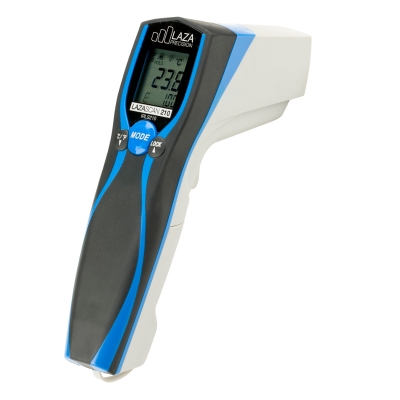Widely used across almost all branches of industry and manufacturing, industrial thermometers are specially designed to be more durable than regular laboratory or domestic thermometers, providing accurate temperature measurement in a wide variety of industrial application. Specialised instrumentation is available for specific applications.
Using the right thermometer for the right application is not only necessary to return a correct reading in a safe fashion, but it’s also important in order to achieve regulatory compliance. Read on to gain insight into the range of products available and the different contexts in which they are suitable for use.
Types of Industrial Thermometers
The primary distinguishing factor between different thermometers is the type of temperature sensor used. The four most common types of sensors used in industry include liquid- or gas-filled, electronic, bimetallic and infra-red (IR).
Gas- and Liquid-filled
Gas- and liquid-filled thermometers use the contraction and expansion of the filling when exposed to heat as a means of detecting and measuring temperature. As the temperature rises, the liquid or gas expands along a narrow capillary to provide a reading. These thermometers usually consist of a narrow-gauge glass tube and tend to be filled with mercury or alcohol.
Depending on the application, the choice of gas or liquid could be important. Mercury is most commonly used, but it is a toxic chemical. Red alcohol spirit is chosen for more safety-conscious settings. The material used for the thermometer itself is also vital. In industrial settings involving high pressure or extreme temperatures, a choice is offered between glass or metal. Metal tubes are more durable, and stainless steel constructions are particularly resistant to corrosion and permit the thermometer to be easily mounted.
Bimetallic
Bimetallic thermometers detect temperature via a bimetal coiled spring. The coil consists of two different metals, usually copper, brass or steel, welded together. These metals are chosen because of the differing heat sensitivities of each one. When the strip of combined metals is heated, the different metals expand by differing amounts based on their individual properties of thermal expansion, allowing the accurate measurement of temperature.
Bimetallic thermometers are built on a simple concept and are therefore cheap to construct and purchase and very straightforward to install and use. The use of metal additionally makes them very durable. However, ambient temperatures and other environmental conditions can make bimetallic thermometers less accurate than liquid- and gas-filled devices, making them suited for applications where only a basic idea of temperature is required over a long period of time in a rugged operating context.
Electronic
This type of thermometer uses thermistors and resistors to measure variations in electrical resistance as a factor of temperature. Electronic thermometers are more precise than the analogue types discussed above due to the digital components and processing techniques used.
Infra-red
Particularly useful in settings where contamination and hygiene are a priority, infra-red devices do not require physical contact to measure the temperature of an object. Unlike probe temperatures, they can only measure surface temperature, so they are not ideal for food safety and are more frequently used in medical settings.

